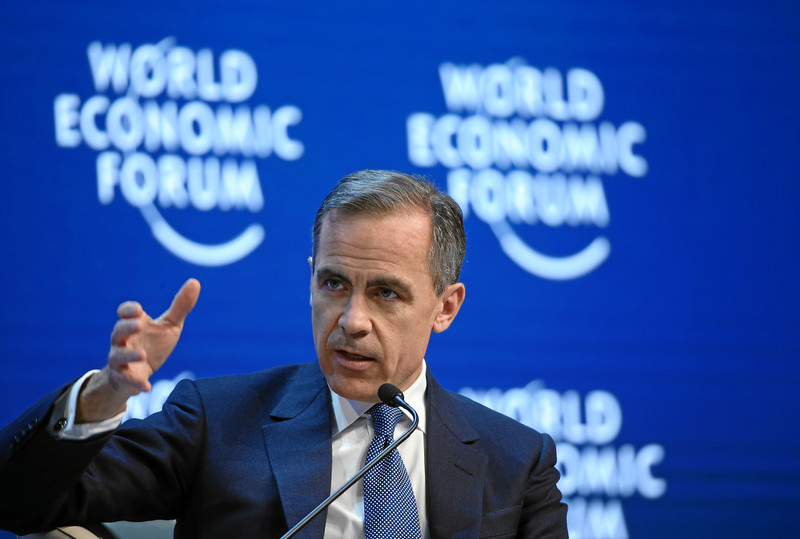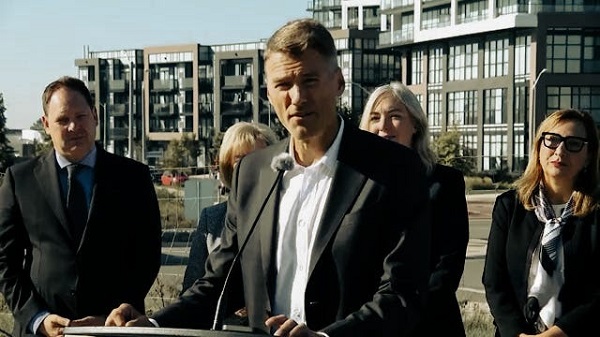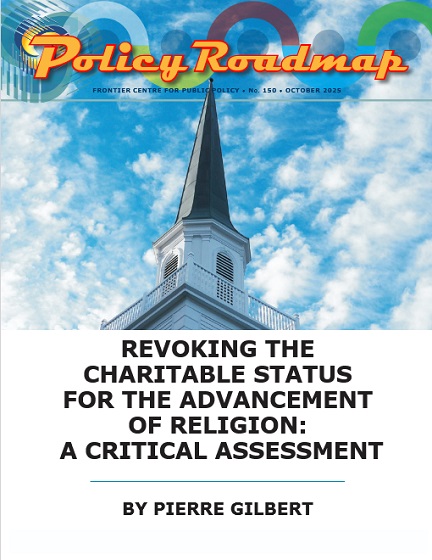Business
Feds spend $4.3 million printing out budget

From the Canadian Taxpayers Federation
Author: Ryan Thorpe
The average cost for each copy of the budget is $110.
Federal documents, including the budget, are routinely made available for free on government websites.
Here’s how the federal government could have saved money printing the budget:
It could have bought 1,000 top of the line, all-in-one printers at retail price.
Then it could have bought 10,000 multi-packs of colour ink.
Along with 106,000 reams of paper.
And then it could have assigned one of the 108,000 new bureaucrats hired under Prime Minister Justin Trudeau to print out copies of the budget.
Or it could have bought more than 333,000 USB flash drives and handed out digital copies to anyone who wanted to read it.
And even after this epic office supply shopping spree, Ottawa would have saved a million dollars.
Instead, Ottawa blew $4.3 million on printing the federal budget since 2015.
In fact, the government continues to spend half-a-million dollars a year printing paper copies of the budget, more than a decade after authorizing the transition to digital-only publications, according to documents obtained by the Canadian Taxpayers Federation.
“It’s 2024, presumably the government isn’t still using carrier pigeons, so it probably doesn’t need to spend half-a-million dollars printing paper copies of its budget every year,” said Franco Terrazzano, CTF Federal Director. “Not only are taxpayers getting soaked by what’s in the budget, we’re also getting a six-figure tab just to print it out.”
On average, the federal government spends $482,000 annually printing out thousands of copies of its budget, despite the fact the government has been trumpeting its embrace of the digital economy for years.
The costliest year on record was 2023, when the Trudeau government spent $753,160 printing 4,200 copies of the federal budget, according to the records.
That was $443,370 more than the Conservatives spent in 2015, the last year in which the government of former prime minister Stephen Harper tabled a budget.
The least expensive year on record was 2021, when the government spent $215,434 printing copies of its budget.
Cost of printing the federal budget, 2015 to 2024, access-to-information records
|
Year |
Number of copies |
Cost |
|
2015 |
5,911 |
$309,790 |
|
2016 |
5,876 |
$490,334 |
|
2017 |
5,937 |
$553,804 |
|
2018 |
5,561 |
$655,645 |
|
2019 |
4,874 |
$457,793 |
|
2020 |
N/A |
N/A |
|
2021 |
1,599 |
$215,434 |
|
2022 |
3,035 |
$632,273 |
|
2023 |
4,200 |
$753,160 |
|
2024 |
2,225 |
$270,418 |
|
Total |
39,218 |
$4,338,651 |
Given the number of copies the government prints each year, the federal budget would constitute a best seller in the Canadian publishing industry, according to BookNet Canada.
The average cost for each copy of the budget is $110.
In 2012, the Harper government authorized federal departments to transition to online-only publications, estimating the move would save taxpayers $178 million annually.
Federal documents, including the budget, are routinely made available for free on government websites.
“The government proved in 2021 that it could bring printing costs down, so taxpayers expect that to happen every year moving forward,” Terrazzano said. “Printing some physical copies is understandable, but an average tab of half-a-million-dollars is silly.”
Since 2015, the federal government printed 39,218 physical copies of the budget.
According to online calculations, roughly 1,460 standard pine trees would have been cut down to produce that volume of paper.
The Trudeau government is more than 1.8 billion trees short of its promise to plant two billion trees by 2030.
Business
Major Projects Office Another Case Of Liberal Political Theatre

From the Frontier Centre for Public Policy
By Lee Harding
Ottawa’s Major Projects Office is a fix for a mess the Liberals created—where approval now hinges on politics, not merit.
They are repeating their same old tricks, dressing up political favouritism as progress instead of cutting barriers for everyone
On Sept. 11, the Prime Minister’s Office announced five projects being examined by its Major Projects Office, all with the potential to be fast-tracked for approval and to get financial help. However, no one should get too excited. This is only a bad effort at fixing what government wrecked.
During the Trudeau years, and since, the Liberals have created a regulatory environment so daunting that companies need a trump card to get anything done. That’s why the Major Projects Office (MPO) exists.
“The MPO will work to fast-track nation-building projects by streamlining regulatory assessment and approvals and helping to structure financing, in close partnership with provinces, territories, Indigenous Peoples and private investors,” explains a government press release.
Canadians must not be fooled. A better solution would be to create a regulatory and tax environment where these projects can meet market demand through private investment. We don’t have that in Canada, which is why money has fled the country and our GDP growth per capita is near zero.
Instead of this less politicized and more even-handed approach, the Liberals have found a way to make their cabinet the only gatekeepers able to usher someone past the impossible process they created. Then, having done so, they can brag about what “they” got done.
The Fraser Institute has called out this system for its potential to incentivize bribes and kickbacks. The Liberals have such a track record of handing out projects and even judicial positions to their friends that such scenarios become easier to believe. Innumerable business groups will be kissing up to the Liberals just to get anything major done.
The government has created the need for more of itself, and it is following up in every way it can. Already, the federal government has set up offices across Canada for people to apply for such projects. Really? Anyone with enough dollars to pursue a major project can fly to Ottawa to make their pitch.
No, this is as much about the show as it is about results—and probably much more. It is all too reminiscent of another big-sounding, mostly ineffective program the Liberal government rolled out in 2017. They announced a $950-million Innovation Superclusters Initiative “designed to help strengthen Canada’s most promising clusters … while positioning Canadian firms for global leadership.”
That program allowed any company in the world to participate, with winners getting matching dollars from taxpayers for their proposals. (But all for the good of Canada, we were told.) More than 50 applications were made for these sweepstakes, which included more than 1,000 businesses and 350 other participants. In Trudeau Liberal fashion, every applicant had to articulate how their proposal would increase female jobs and leadership and encourage diversity in the long term.
The entire process was like one big Dragon’s Den series. The Liberals trotted out a list of contestants full of nice-sounding possibilities, with maximum hype and minimal reality. Late in the process, Minister of Innovation, Science and Industry Navdeep Bains picked the nine finalists himself (all based in cities with a Liberal MP), from which five would be chosen.
The alleged premise was to leverage local and regional commercial clusters, but that soon proved ridiculous. The “Clean, Low-energy, Effective and Remediated Supercluster” purported to power clean growth in mining in Ontario, Quebec and Vancouver. Not to be outdone, the “Mobility Systems and Technologies for the 21st Century Supercluster” included all three of these locations, plus Atlantic Canada. They were only clustered by their tendency to vote Liberal.
Today, the MPO repeats this virtue-signalling, politicking, drawn-out, tax-dollar-spending drama. The Red Chris Mine expansion in northwest British Columbia is one of the proposals under consideration. It would be done in conjunction with the Indigenous Tahltan Nation and is supposed to reduce greenhouse gas emissions by 70 per cent. That’s right up the Liberal alley.
Meanwhile, the project is somehow part of a proposed Northwest Critical Conservation Corridor that would cordon off an area the size of Greece from development. Is this economic growth or economic prohibition? This approach is more like the United Nations’ Agenda 2030 than it is nation-building. And it is more like the World Economic Forum’s “stakeholder capitalism” approach than it is free enterprise.
At least there are two gems among the five proposals. One is to expand capacity at the Port of Montreal, and another is to expand the Canada LNG facility in Kitimat, B.C. Both have a market case and clear economic benefits.
Even here, Canadians must ask themselves, why must the government use a bulldozer to get past the red tape it created? Why not cut the tape for everyone? The Liberals deserve little credit for knocking down a door they barred themselves.
Lee Harding is a research fellow for the Frontier Centre for Public Policy.
Business
‘Taxation Without Representation’: Trump Admin Battles UN Over Global Carbon Tax


From the Daily Caller News Foundation
The Trump administration is fighting to block a global carbon tax that a United Nations (UN) agency is attempting to pass quietly this week.
The International Maritime Organization (IMO), a UN body based in London, is meeting this week to adopt a so-called “Net-Zero Framework,” which would levy significant penalties on carbon dioxide emissions from ships that exceed certain limits. The Trump administration argues the proposal could raise global shipping costs by as much as 10%, ultimately driving up prices for American consumers.
“President Trump has made it clear that the United States will not accept any international environmental agreement that unduly or unfairly burdens the United States or harms the interests of the American people,” Secretary of State Marco Rubio, Secretary of Energy Chris Wright and Secretary of Transportation Sean Duffy said in a joint statement Friday.
Dear Readers:
As a nonprofit, we are dependent on the generosity of our readers.
Please consider making a small donation of any amount here.
Thank you!
“The Administration unequivocally rejects this proposal before the IMO and will not tolerate any action that increases costs for our citizens, energy providers, shipping companies and their customers, or tourists,” the cabinet secretaries wrote.
This week, the UN is attempting to pass the first global carbon tax , which will increase energy, food, and fuel costs across the world. We will not allow the UN to tax American citizens and companies.
Under the leadership of @POTUS, the U.S. will be a hard NO. We call on…
— Secretary Marco Rubio (@SecRubio) October 15, 2025
The proposed tax is part of the IMO’s broader goal to bring global shipping to net-zero emissions “by or around” 2050. Qualifying ships that fall short of emissions targets would face taxes ranging from $100 to $380 per ton of CO2.
Notably, the tax would be paid directly by shipowners rather than governments.
The Net-Zero Framework could generate between $11 billion and $12 billion annually from 2028 through 2030, paid into a UN-controlled fund, according to University College London. Meanwhile, other estimates warn that if the global fleet misses the IMO’s targets by even 10%, the annual cost of emissions could climb to $20 to $30 billion by 2030 and potentially exceed $300 billion by 2035.
Some critics equated the proposal to “taxation without representation,” noting that an unelected committee would have the authority to set and potentially raise the tax.
The Trump administration is urging member states to reject the proposal and has threatened retaliatory measures against countries that support it. These include investigations into anti-competitive practices, visa restrictions for maritime crews, commercial and financial penalties, higher port fees for ships tied to those nations, and possible sanctions on officials promoting climate policies.
“The Trump administration is right to draw a hard line against the UN’s latest scheme to export its climate agenda through global taxes and trade barriers,” Jason Isaac, CEO of the American Energy Institute, told the Daily Caller News Foundation.
Isaac said the proposed carbon tax, along with other measures — including the EU’s Corporate Sustainability Reporting Directive, which requires companies to disclose environmental and social impacts — “represent an alarming attempt to impose costly, extraterritorial regulations on American businesses and consumers.”
“These measures threaten U.S. sovereignty, inflate energy and transport costs, and weaponize climate policy as a tool of economic coercion,” Isaac said. “The United States must not tolerate foreign governments using environmental pretexts to dictate how we trade, build, and move goods. President Trump’s firm stance puts American workers and energy security first, where they belong.”
Steve Milloy, senior fellow at the Energy & Environment Legal Institute, also commended the administration’s efforts to block the UN measure.
“Not only does [Trump] oppose the UN carbon tax, but he has instructed his administration to take action against nations that try to implement it against the U.S.,” Milloy told the DCNF. “I am simply in awe of his commitment to ending the international climate hoax, which has long been aimed at stealing from and otherwise crippling our country’s economy and national security.”
-

 International2 days ago
International2 days agoNumber of young people identifying as ‘transgender’ declines sharply: report
-

 Alberta15 hours ago
Alberta15 hours agoClick here to help choose Alberta’s new licence plate design
-

 Energy2 days ago
Energy2 days agoIndigenous Communities Support Pipelines, Why No One Talks About That
-

 Business2 days ago
Business2 days ago“Nation Building,” Liberal Style: We’re Fixing a Sewer, You’re Welcome, Canada
-

 Business2 days ago
Business2 days agoFinance Committee Recommendation To Revoke Charitable Status For Religion Short Sighted And Destructive
-

 Bruce Dowbiggin2 days ago
Bruce Dowbiggin2 days agoLong-Distance Field Goals Have Flipped The Field. Will The NFL Panic?
-

 Alberta2 days ago
Alberta2 days agoThe Technical Pitfalls and Political Perils of “Decarbonized” Oil
-

 International15 hours ago
International15 hours agoDaughter convinces healthy father to die in double assisted suicide with mother


